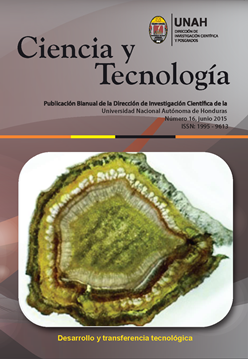Applying the technique of principal components analysis of poverty in Honduras
DOI:
https://doi.org/10.5377/rct.v0i16.2181Keywords:
synthetic indicators, poverty and analysis of main componentsAbstract
The main goal in this research was to identify the main factors associated with poverty due to the application of principal component analysis (PCA). This exploratory analysis technique discovers the relationships between variables and according to the results, propose the most appropriate statistical analysis. In addition, this technique reduces considerably the number of variables into few components that synthesize the variations of the analyzed phenomenon. The methodology used is characterized as quantitative, using data from the Permanent Survey on Multi purpose housing for the following: 2001, 2005 and 2010, during the month of September. The scope used can be defined as correlational with a non-experimental transactional design. The ACP results indicate that poverty in Honduras is not only characterized by economic factors, but those related to human capital formation, demographic characteristics, the labor market and the living conditions of households.
Revista Ciencia y Tecnologia No. 16, Junio 2015: 82-96
Downloads
2045
Downloads
Published
How to Cite
Issue
Section
License
© Revista Ciencia y Tecnología
Authors who publish in this journal accept the following conditions: In accordance with the legislation of copyright, Revista Ciencia y Tecnología, recognizes and respects the moral right of authors, as well as the ownership of the patrimonial right, which will be ceded to the magazine for its diffusion in open access in printed version and in digital format. By being part of multiple indexers, databases and reference systems, the articles published by Revista Ciencia y Tecnología will be visible and will be downloaded from these websites, indicating, in all cases, the authorship of the articles, the date of publication and the number of the journal to which they correspond.




